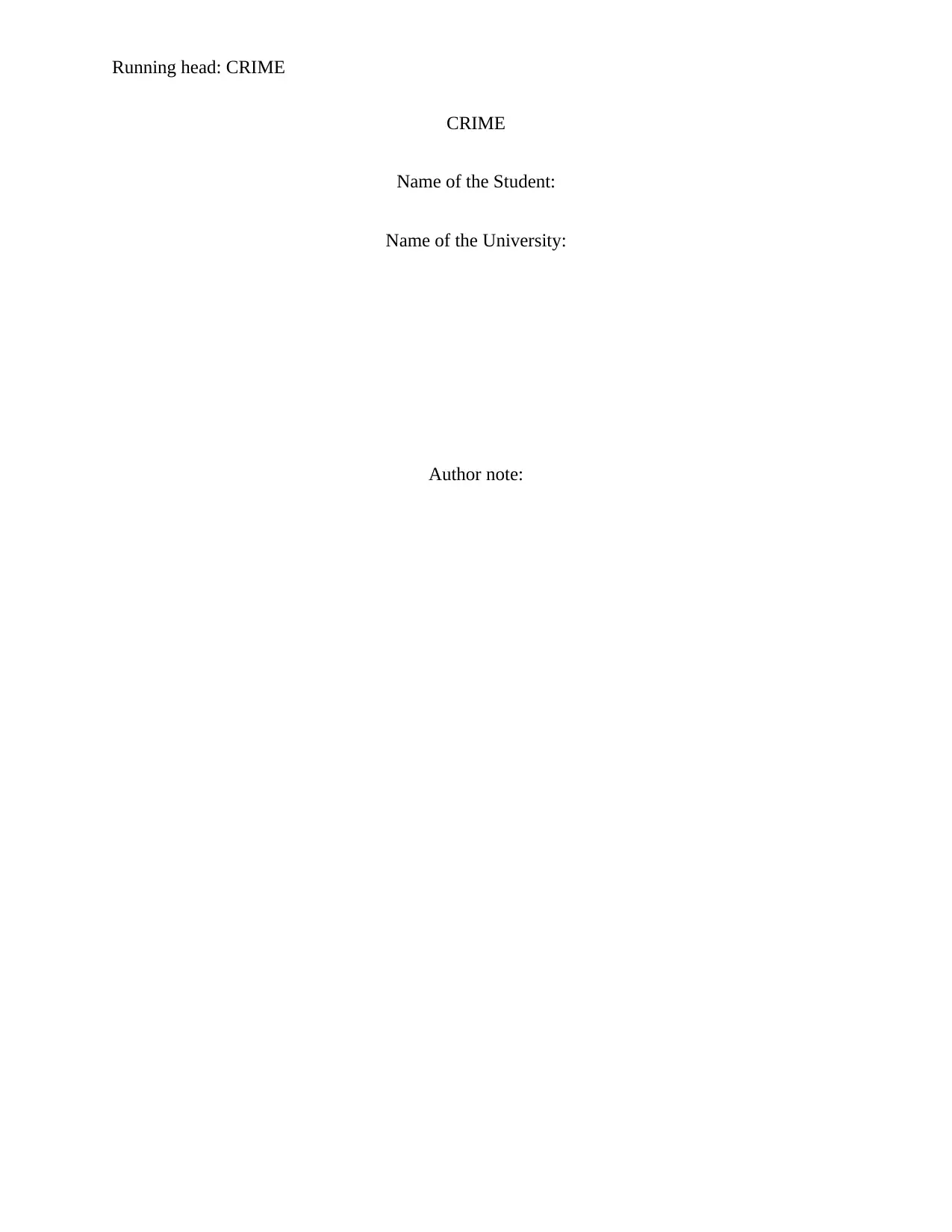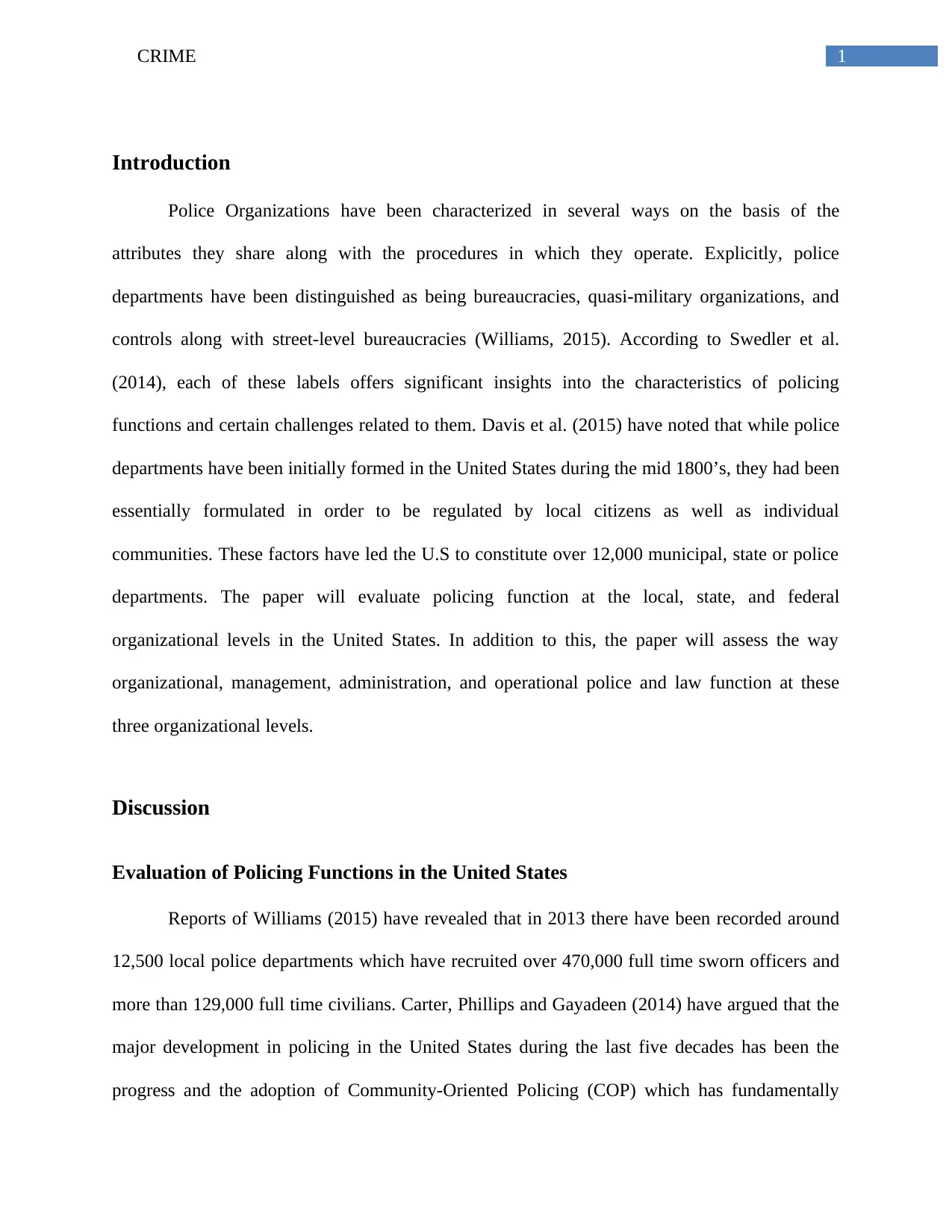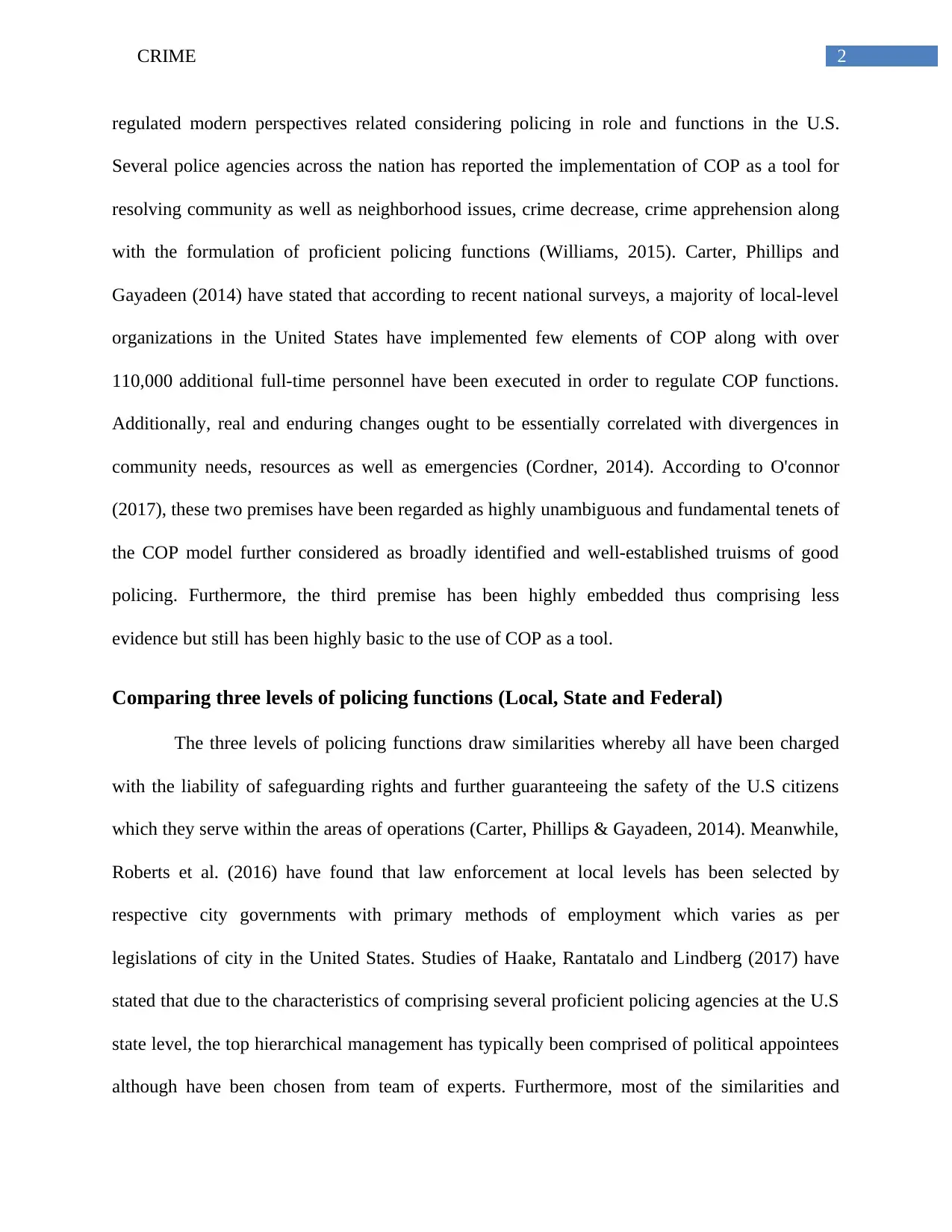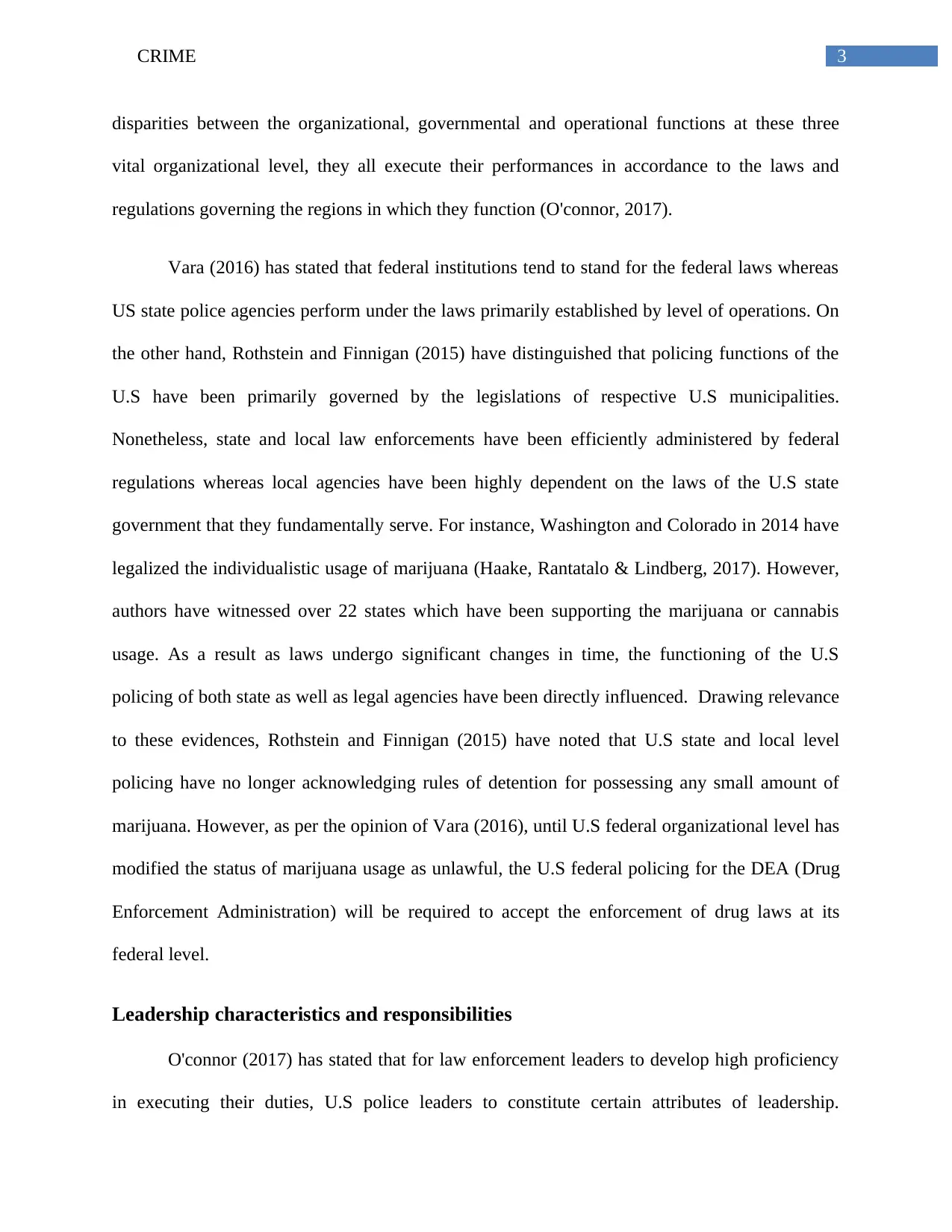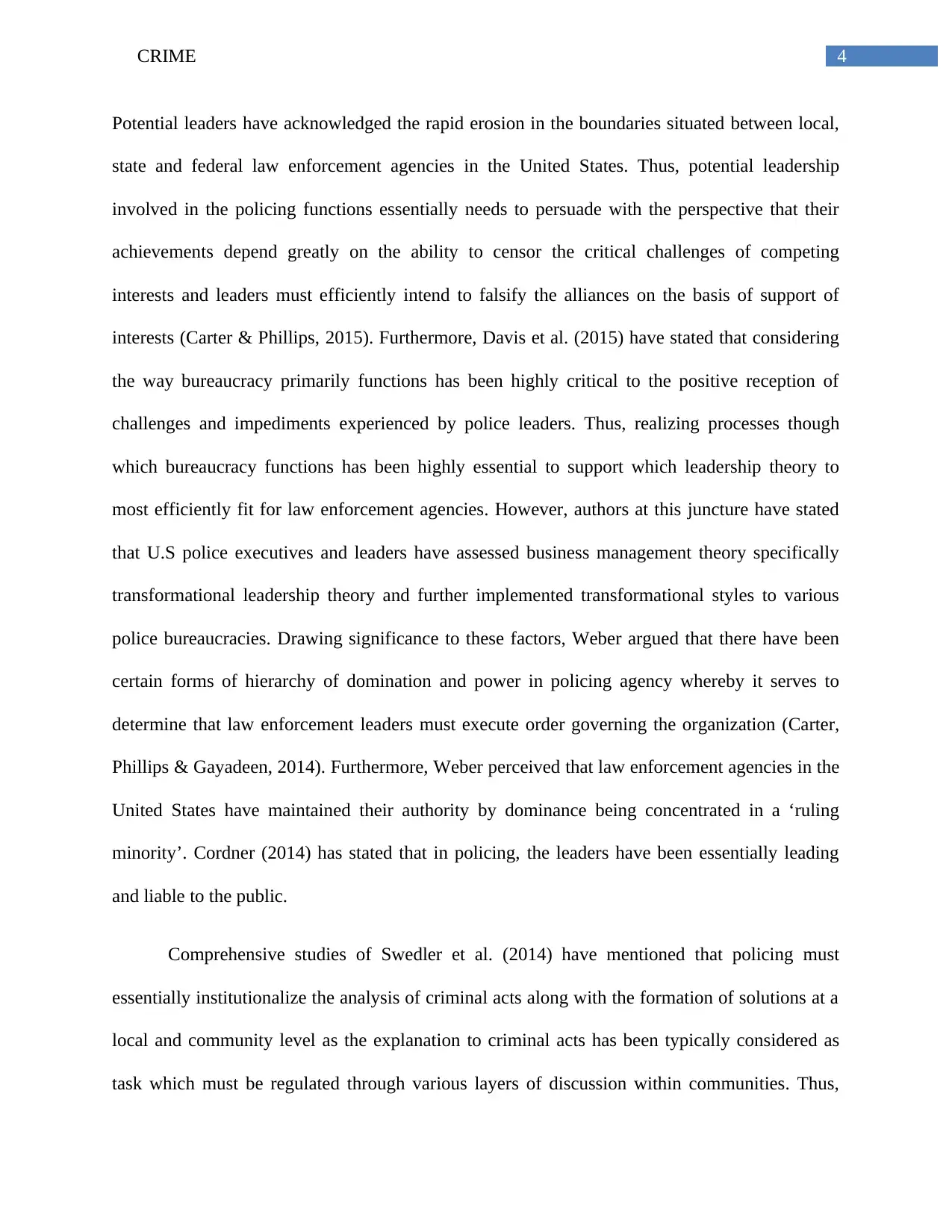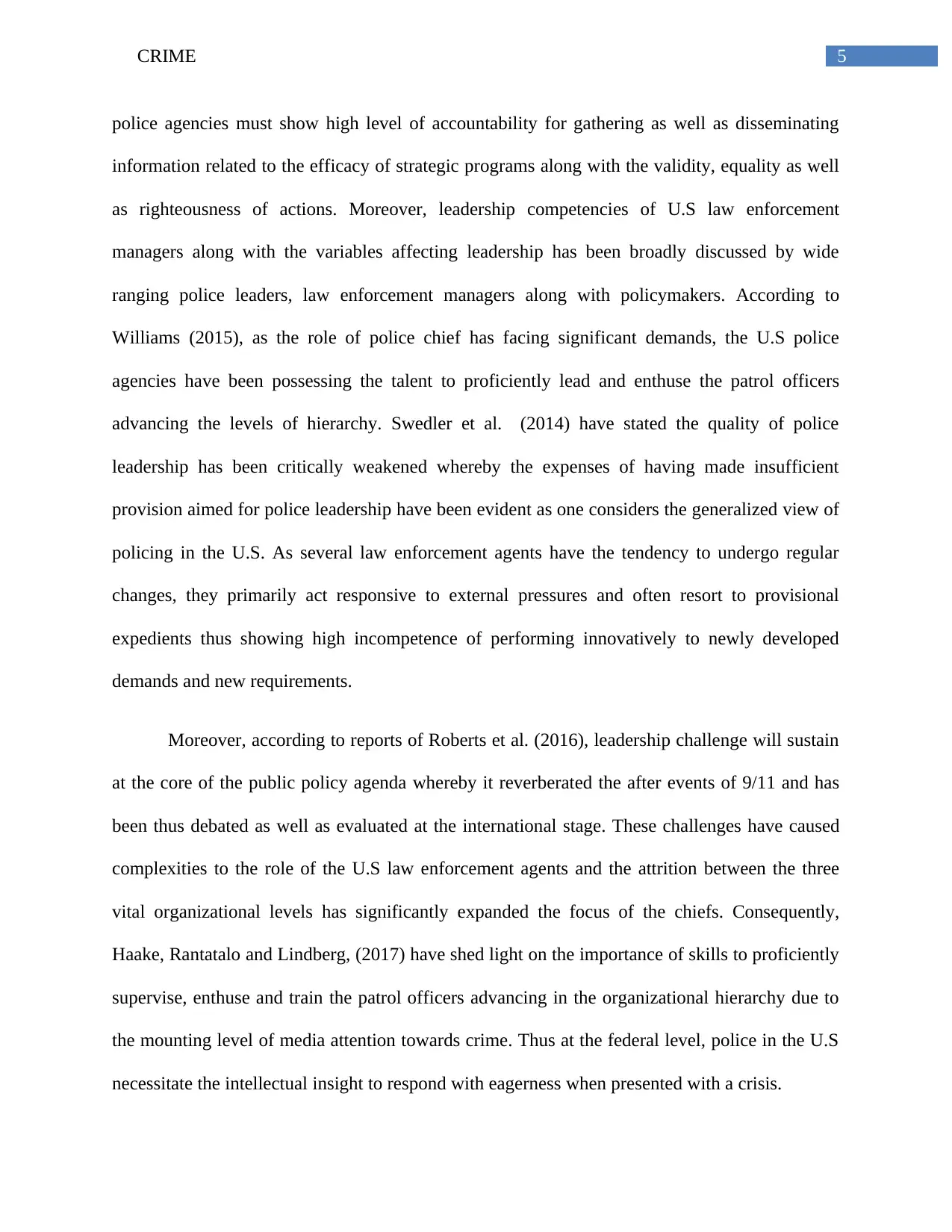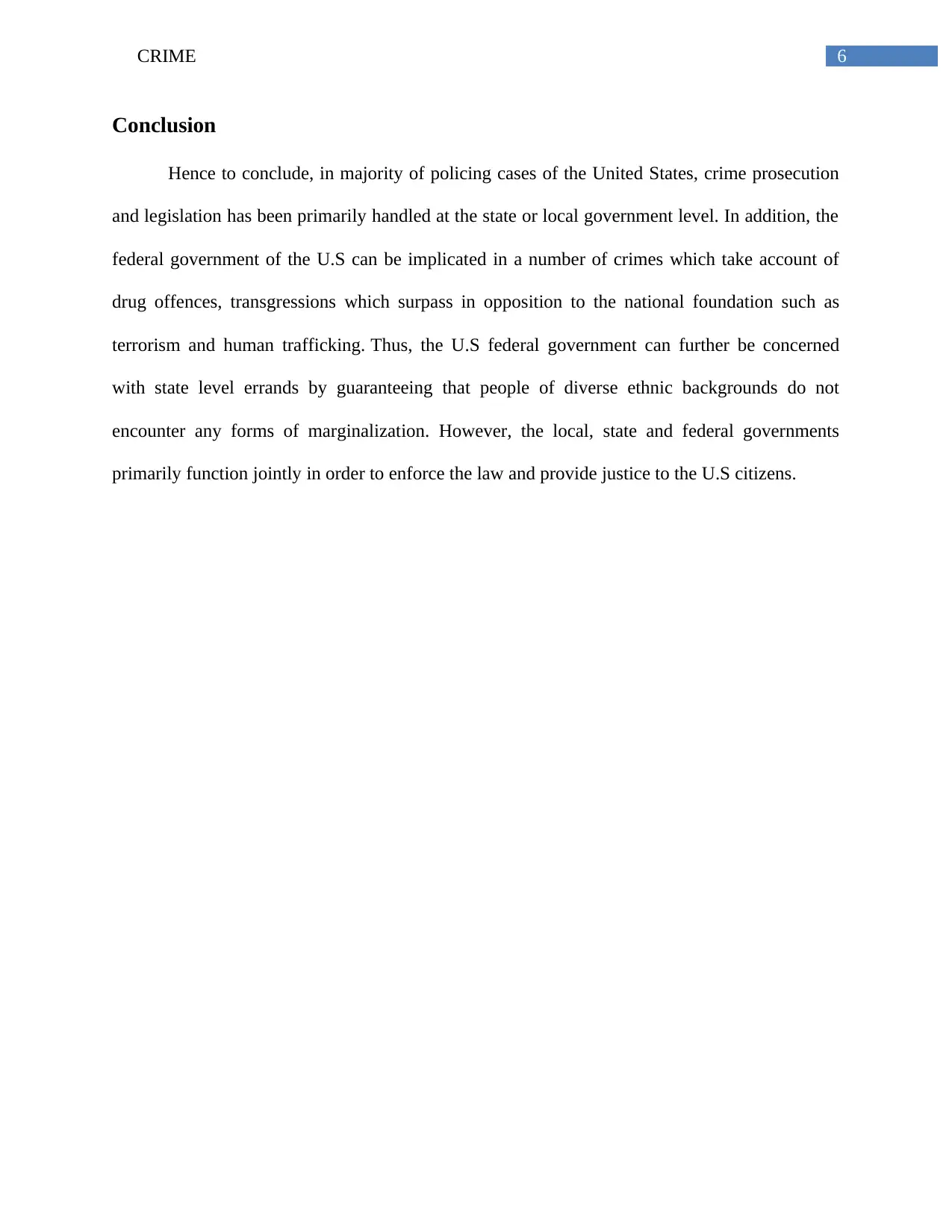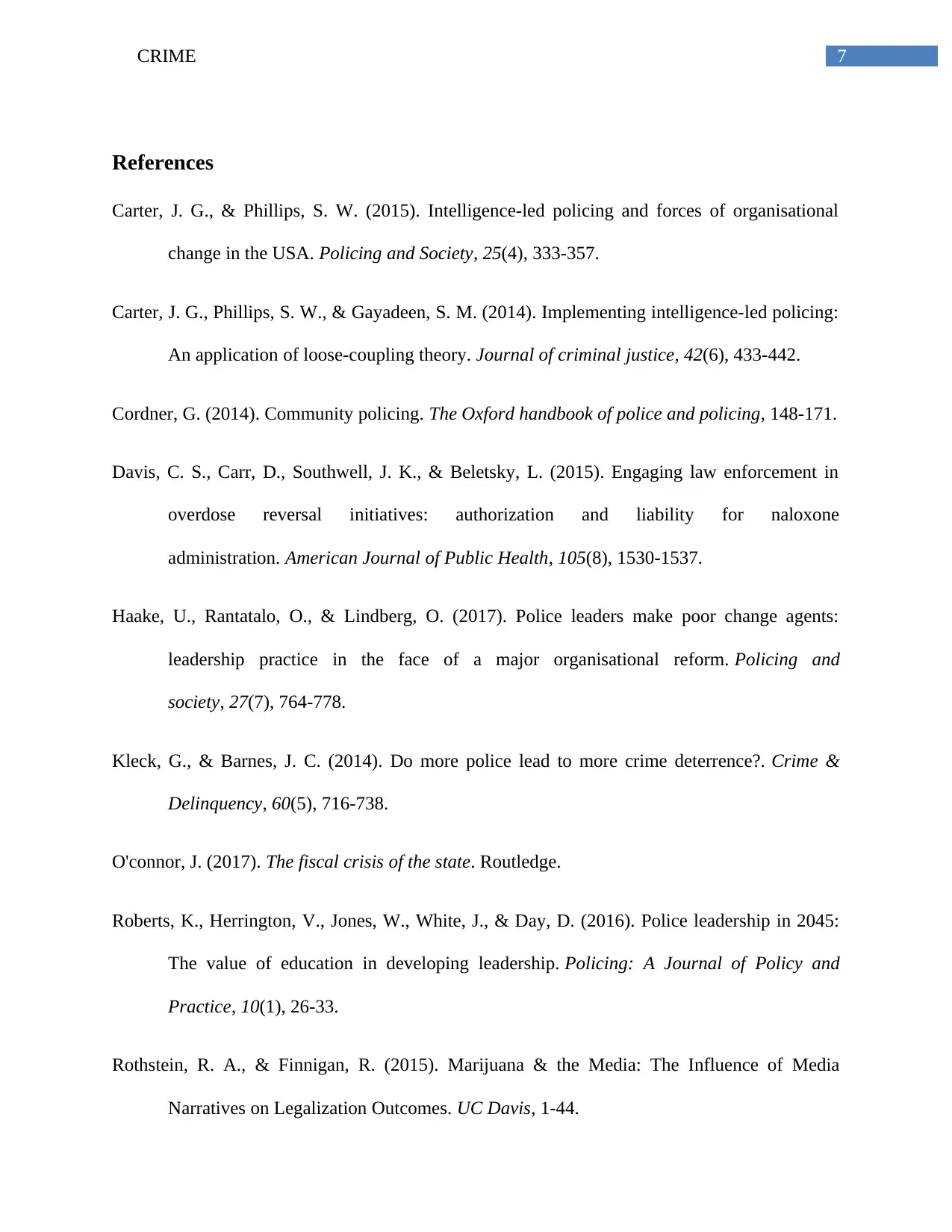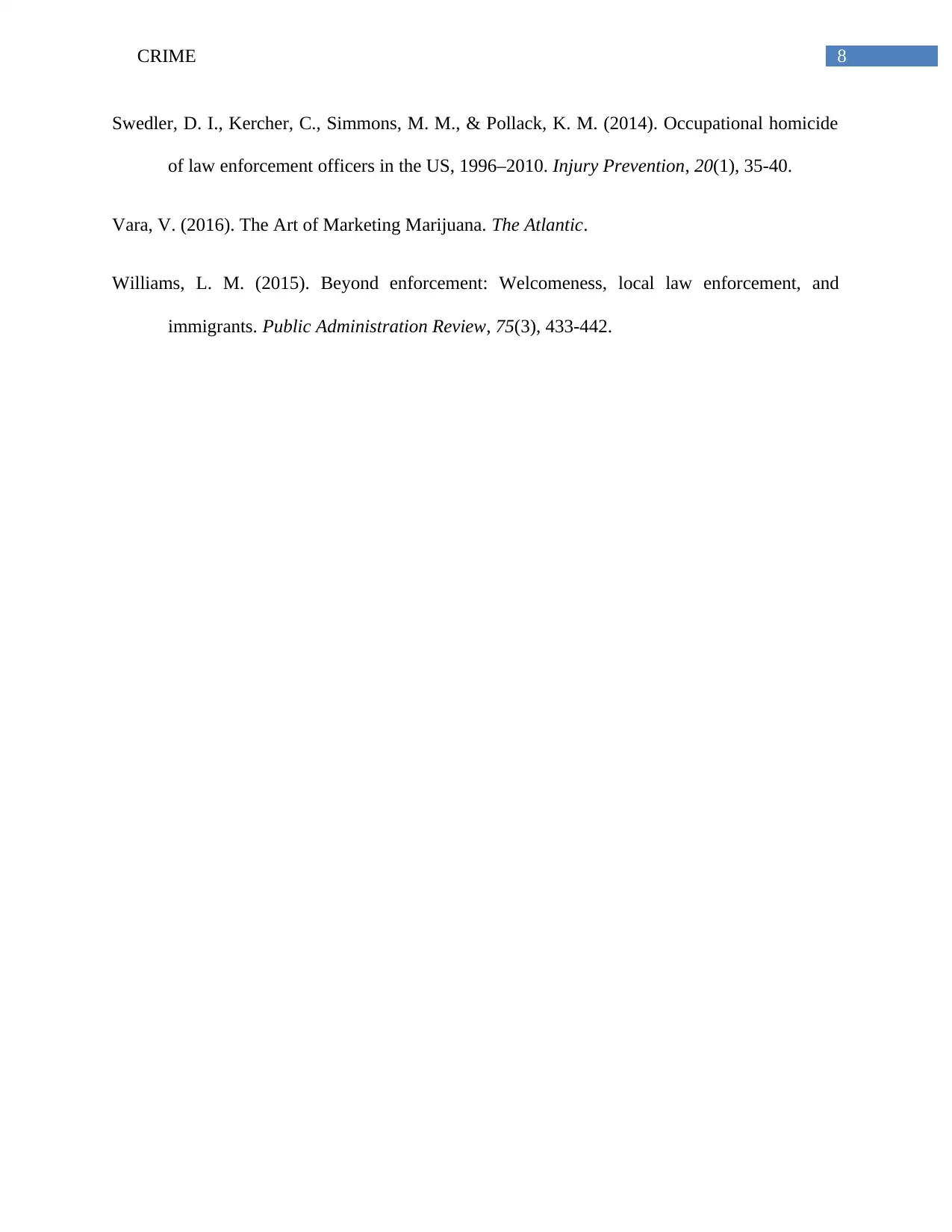In this report we will discuss about policing functions and below are the summaries point:-
Police organizations in the United States have been characterized as bureaucracies, quasi-military organizations, and street-level bureaucracies.
There are over 12,000 municipal, state, or police departments in the US.
Community-oriented policing (COP) has been widely adopted in the US, with many agencies implementing it to resolve community issues and decrease crime.
All three levels of policing (local, state, federal) are responsible for safeguarding citizens' rights and ensuring their safety within their areas of operation.
Local law enforcement is selected by city governments, while state and federal law enforcement is typically managed by political appointees chosen from a team of experts.
Federal institutions represent federal laws, while state police agencies operate under the laws established by their level of operation.
Changes in laws and regulations directly influence the functioning of state and local law enforcement agencies.
Until the federal government modifies the status of marijuana usage, the DEA will continue to enforce drug laws at the federal level.
![[object Object]](/_next/static/media/star-bottom.7253800d.svg)
![[object Object]](/_next/static/media/star-bottom.7253800d.svg)
